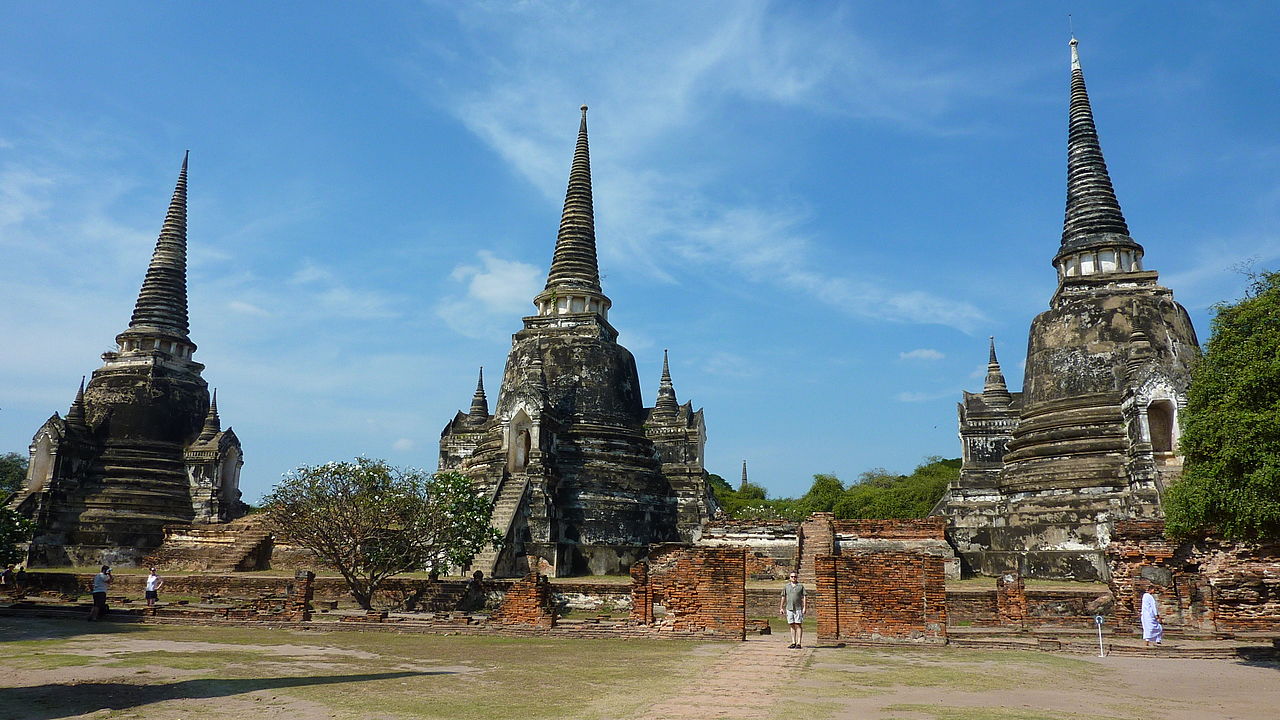Whether it is riding in the back of an open tuk-tuk or racing across the waves in a longtail boat, a journey through Thailand’s
islands always feels like a real adventure. Thailand’s beauty is no
secret, but there are still a few wonders that remain relatively under
wraps. In this excerpt from an article originally by Oliver Berry, Lonely Planet Magazine takes you deeper into the Thai islands.
How to interact ethically with elephants in Thailand
 For many people, riding on the back of an
elephant in Thailand is the ultimate bucket list experience. However,
there’s now overwhelming evidence to support claims by animal welfare
experts that this form of tourism is not only unsustainable, but
ultimately harmful for Asia’s gentle giants.
For many people, riding on the back of an
elephant in Thailand is the ultimate bucket list experience. However,
there’s now overwhelming evidence to support claims by animal welfare
experts that this form of tourism is not only unsustainable, but
ultimately harmful for Asia’s gentle giants.Armed with this information, it’s easy to argue that supporting elephantourism in Thailand – and across Southeast Asia – is wrong. However, Thailand’s elephant ‘problem’ is a complex issue. There are thought to be less than 5,000 elephants left in Thailand, yet a whopping 4,000 of them are captive – and the latter still need to be fed and exercised, and financially support their mahout (traditional carer). Following Thailand’s 1989 ban on using elephants for logging, many mahouts claim that without charging tourists for rides and shows, they would starve alongside their charges – which alone cost a minimum of 1,000B per day to feed properly.
Fortunately, there are a small but growing number of elephant refuge centres in Thailand that are employing more sustainable methods to keep tourists, elephants and their mahouts happy. Read on to learn about five of the most rewarding elephant interactions Thailand has to offer – all of which run comprehensive volunteering programs if a short visit isn’t enough.
Boon Lott’s Elephant Sanctuary (BLES), Sukhothai
Featured in Lonely Planet’s top 10 unforgettable family travel experiences for 2015, BLES was founded by Briton Katherine Connor after a courageous baby elephant called Boon Lott (‘survivor’ in Thai) inspired her to dedicate her life to nurturing rescued and retired elephants. In the decade since, Connor has been recognised by the International Fund for Animal Welfare for her efforts. Guests at BLES, located outside the village of Baan Tuek, an hour from Sukhothai airport, are involved in all aspects of sanctuary life, from collecting elephant food from the jungle to maintaining herding areas and walking elephants to grazing grounds.Do it: Overnight visit (including transfers and all meals): 5,000B. Due to its remote location BLES does not run single-day tours – most visitors stay for several days on individually-tailored itineraries.
Related articles:
Thailand's wild and wonderful November festivals
Where to sample Chiang Mai's best kôw soy (famous noodle soup)
Thailand’s Mae Hong Son loop by motorbike
Pin this image  Elephant Nature Park, Chiang Mai.
Elephant Nature Park, Chiang Mai.
 Elephant Nature Park, Chiang Mai.
Elephant Nature Park, Chiang Mai.Elephant Nature Park, Chiang Mai
Thailand’s best-known elephant rehabilitation centre has won dozens of awards for its commitment to rescuing and rehabilitating Thailand’s working elephants since the ‘90s. On a one-day visit to Elephant Nature Park, about 60kms from Chiang Mai, you’ll get the chance to hear the elephants’ stories before feeding them, and then walking them down to the river for an afternoon bath.Do it: One day tour (including transfers and lunch): 2,500/1,250B (adult/child). Overnight tour (including dinner): 5,800/2,900B.
 Tourists help to bathe an elephant at ElephantsWorld, Kanchanaburi. Image by Sarah Reid / Lonely Planet
Tourists help to bathe an elephant at ElephantsWorld, Kanchanaburi. Image by Sarah Reid / Lonely PlanetElephantsWorld, Kanchanaburi
Founded by a Thai vet to function as a retirement home for sick, old, disabled, abused, illegal and street elephants, ElephantsWorld (elephantsworld.org) is a more modest operation than Elephant Nature Park, but operates in a similar manner. In the spirit of the centre's motto 'we work for the elephants, the elephants do not work for us', visitors to Elephants World, 32kms from Kanchanaburi, are invited to help to gather or plant food in the fields that sustain the younger elephants’ enormous appetites, and/or cook sticky rice for the older guys before joining some of them for bath time in the River Kwai.Do it: One-day tour (including transfers, lunch and water): 2,000/1,200B. Overnight tour (including dinner): 4,500/3,200B.
 Visitors to ElephantsWorld help to fertilise vegetables for the elephants. Image by Sarah Reid / Lonely Planet
Visitors to ElephantsWorld help to fertilise vegetables for the elephants. Image by Sarah Reid / Lonely PlanetWildlife Friends Foundation Thailand, Petchaburi
Based 30kms from the seaside resort of Hua Hin, WFFT runs nine animal welfare projects across Thailand ranging from an elephant refuge and education centre to a marine research and rescue outfit and a gibbon rehabilitation program. The elephant refuge camp is equipped for day visits, during which guests will learn about the conservation issues threatening Thailand’s elephants before taking some of the residents for their daily walk and shower. Visitors will also follow WFFT’s volunteers on their feed out to the 350 rescued animals at the centre, and get to see the bears and monkeys enjoy their meal.Do it: One-day visit (including transfers and lunch): 1,800B.
The Surin Project, Surin
Not far from the Cambodian border, this innovative not-for-profit is focused on improving the living conditions of Asian elephants and providing sustainable economic revenue for their mahouts in the local community. A one-week minimum volunteering stint is required to visit the Surin Project (surinproject.org), located about an hour northwest of Surin city. During their stint, volunteers primarily help to plant, maintain and harvest elephant food for the project’s 13 permanent residents, and assist in the development of elephant-friendly tourism options for the elephants and mahouts of Surin province.Do it: One week (all-inclusive): 13,000B.
What to wear (and bring) to an elephant centre: Lightweight clothing (with long sleeves/pants for overnight visits), swimwear, towel, a change of clothes (if bathing with elephants), sunhat, sunscreen, DEET-free insect repellent and sturdy shoes. Volunteers should expect basic facilities.
Lonely Planet Destination Editor Sarah Reid (@sarahtrvls) visited Thailand as a guest of the Tourist Authority of Thailand (uk.tourismthailand.org). Lonely Planet contributors do not accept freebies for positive coverage.
Subscribe to:
Posts (Atom)









